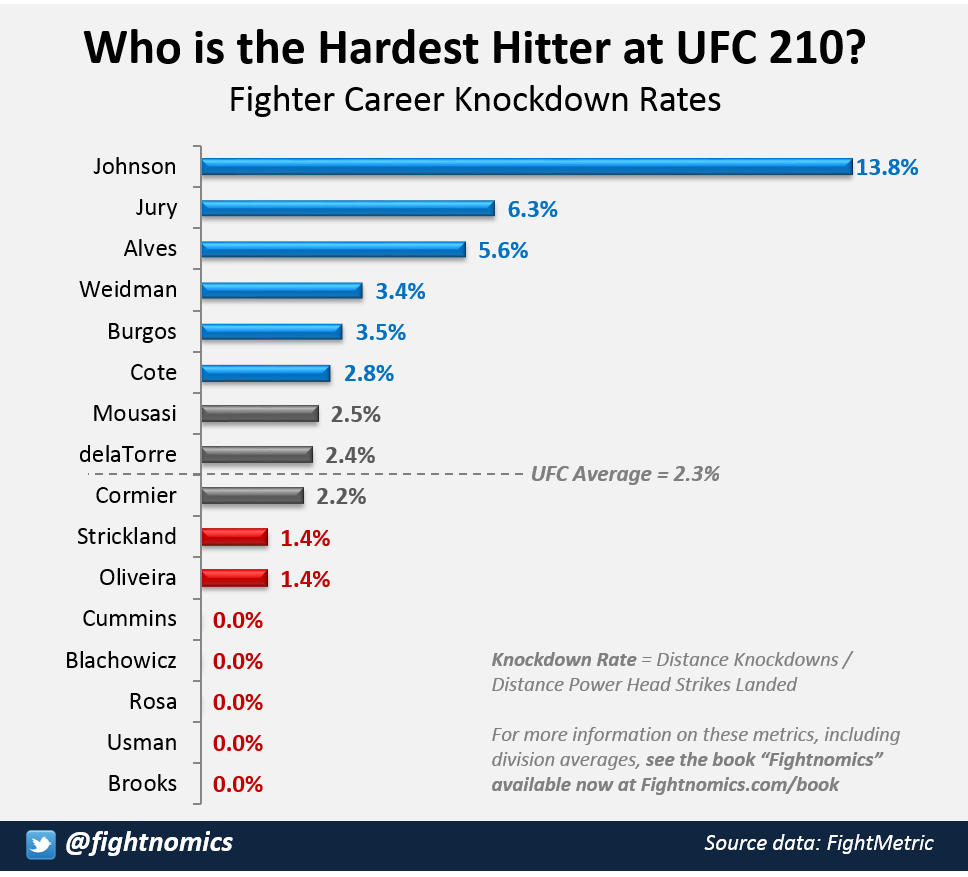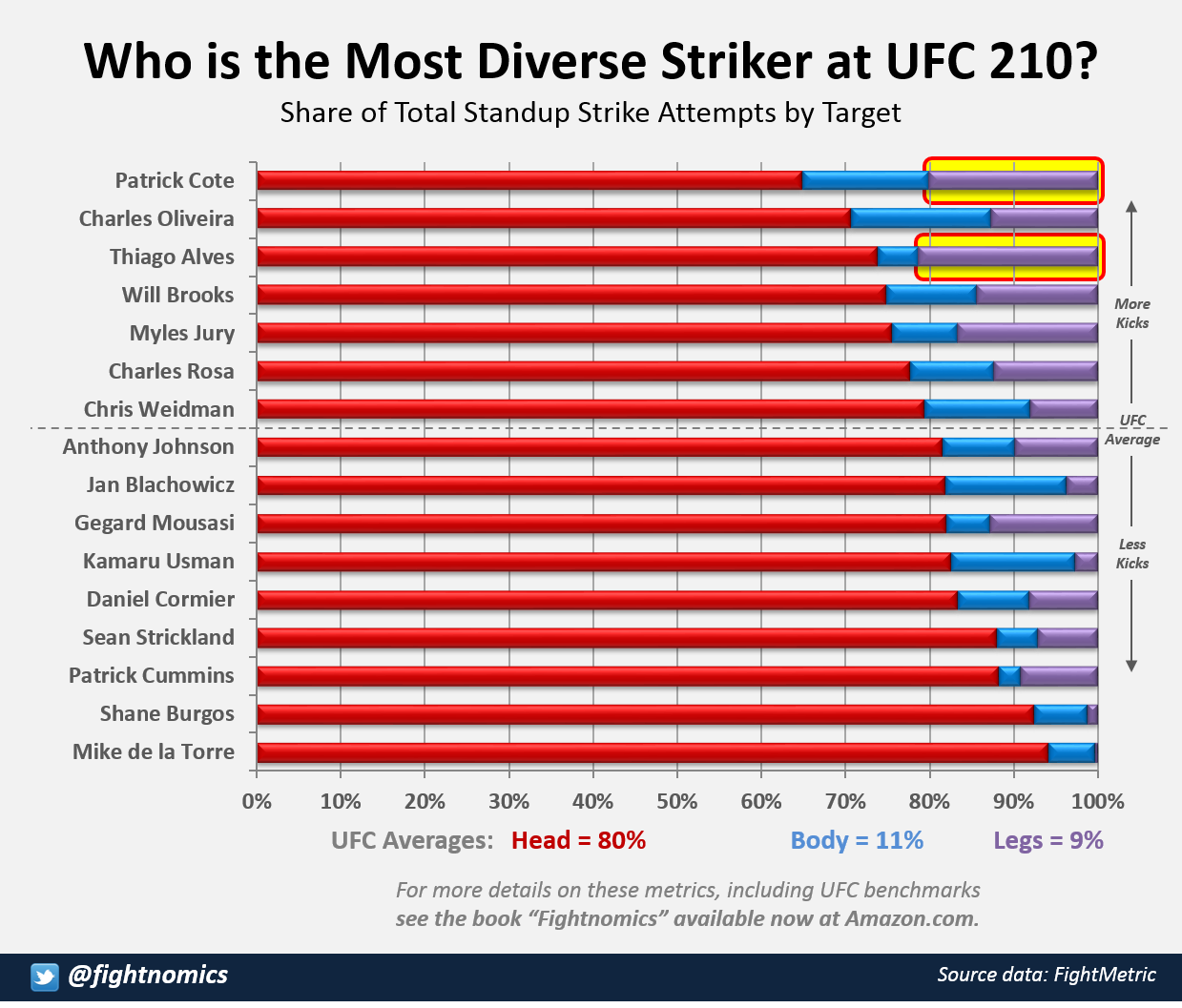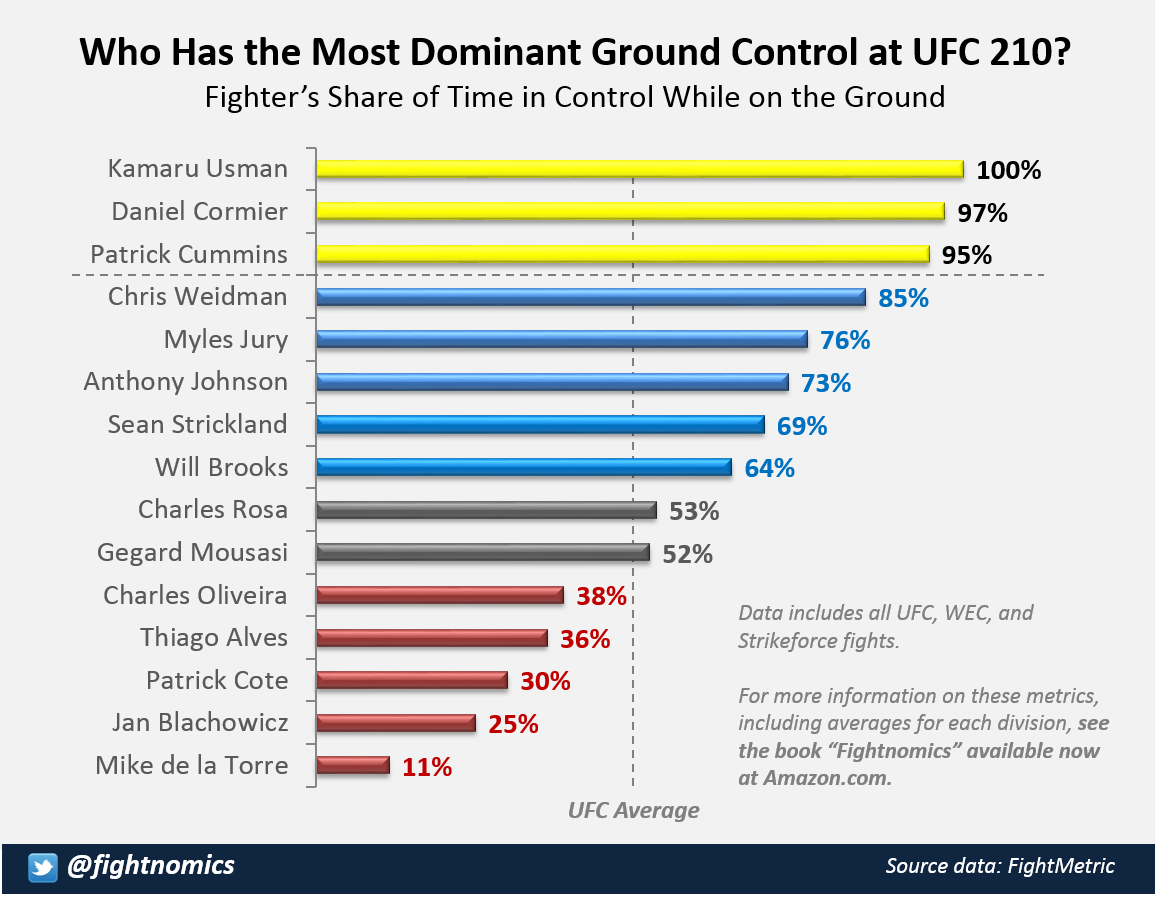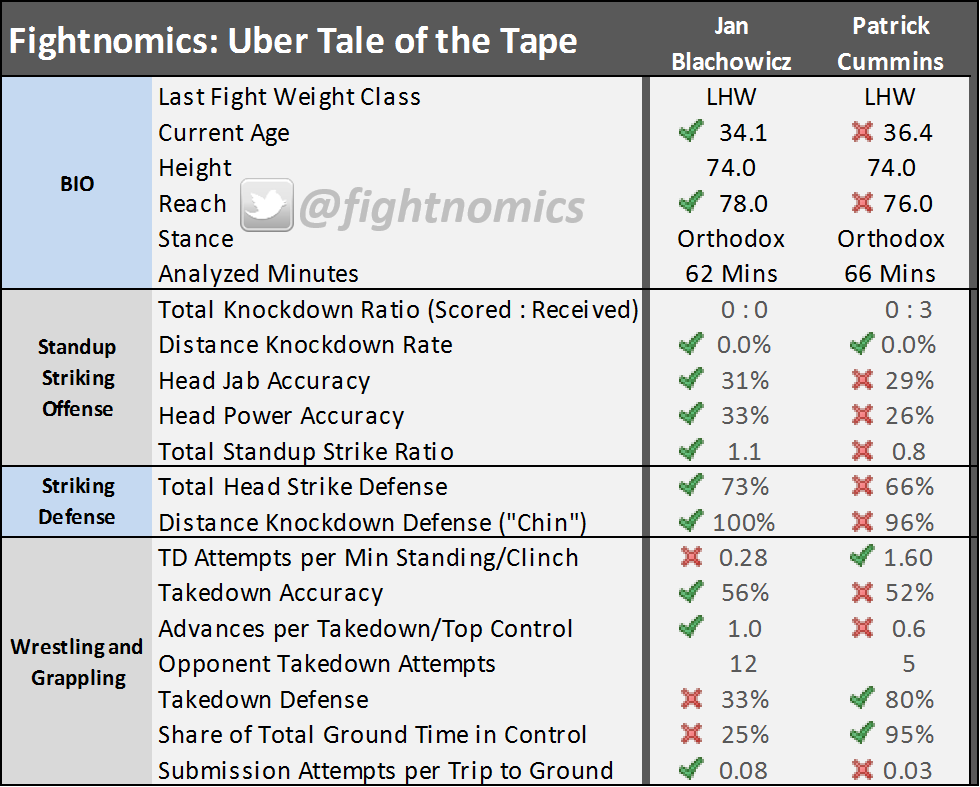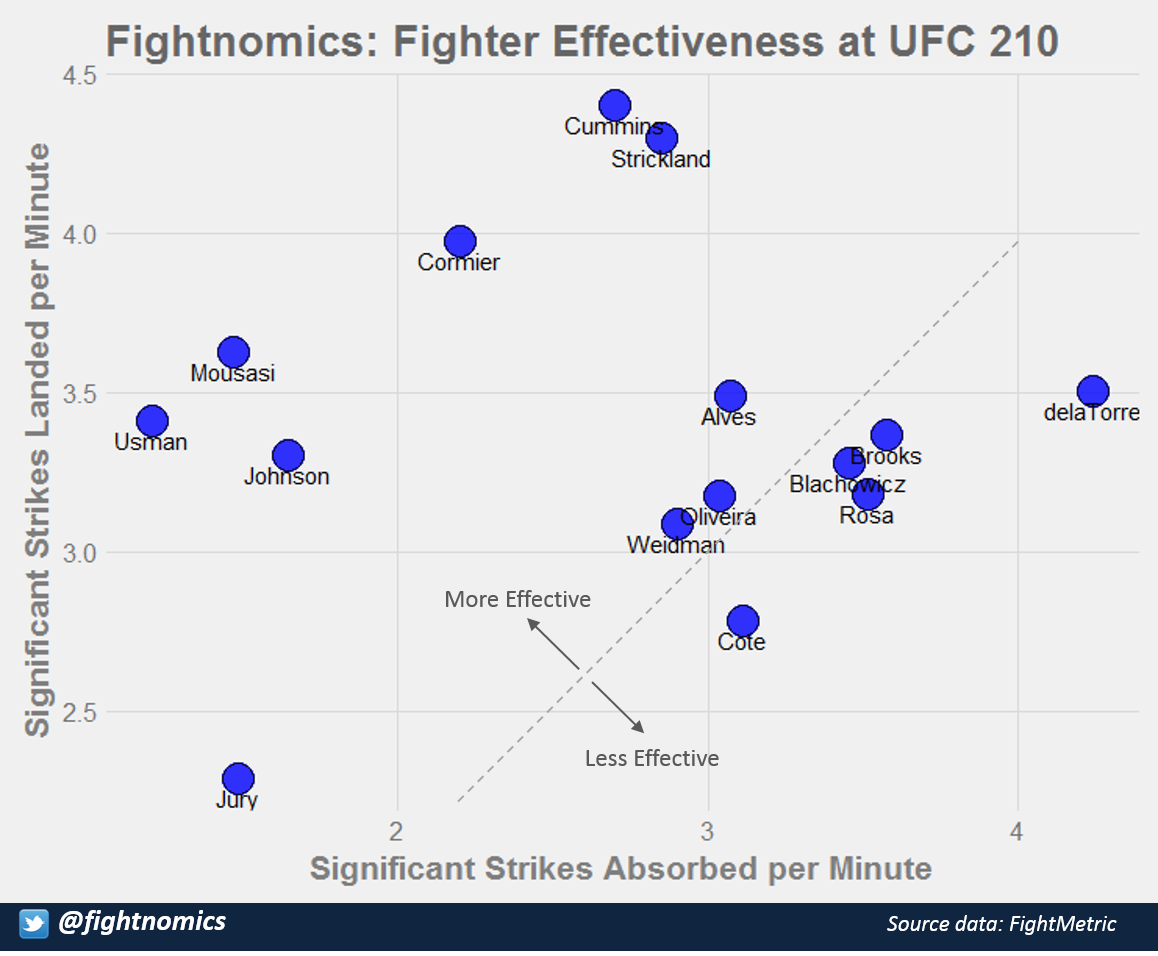1. Yes, Anthony Johnson is the hardest hitter this weekend, and it’s not even close
“Rumble” Johnson will get his second shot at the light heavyweight title this weekend, and also another opportunity to move up in the ranks of the UFC’s all-time leading knockout artists. Rumble is not only the hardest hitter competing this weekend by a factor of two, he’s on pace to catch Anderson Silva with the most career knockdowns in UFC history.
Johnson’s absurdly violent Knockdown Rate means that he doesn’t have to rely on volume or combinations to make his opponents have to focus their game plan on defending strikes. Johnson is a threat with his feet in addition to his hands, but given the wrestling ability of his opponent Daniel Cormier, it’s unlikely that Johnson will attempt many kicks. Not that he needs to with power like this. This isn’t to say Johnson is invulnerable, especially given his historic weakness on the mat, just that no one can blink as long as he’s standing in the pocket.
2. Patrick Cote and Thiago Alves are going to kick each other in the legs
When it comes to distance striking, MMA is still primarily a headhunter’s game. About 81 percent of total strikes are aimed at the head, with the remaining 19 percent roughly split between body and leg kicks. Here’s how the fighters at UFC 210 stack up in terms of strike targets from a distance.
It’s a coincidence that the two fighters who use the most leg kicks, Patrick Cote and Thiago Alves, just happen to be paired against each other this weekend. Both use more than double the usual mix of leg kicks, and they are also above average in terms of body kicks. Neither is an especially assertive initiator at range, so expect these two to trade kicks tit for tat until some openings develop.
3. There are at least three guys who will definitely try to get their fights to the ground
Former wrestling training partners and later UFC opponents Cormier and Patrick Cummins will surprise no one by showing up on paper as dominant wrestlers. But statistically, relative newcomer Kamaru Usman gets the edge by being perfect in his ground control of opponents.
Usman is a big betting favorite in his matchup with Sean Strickland, but both Cummins and Cormier are slight underdogs facing strong strikers. In each of these matchups, the position of the fight will go a long way to determining the victor, which is indicative of striker versus grappler matchups.
4. And Cummins vs Blachowicz certainly looks like striker vs grappler matchup
Cummins clearly has solid wrestling pedigree, and there are some fights where it behooves him to rely on that base. Cummins will have a big advantage on the ground against Blachowicz, who has been controlled more often than not while on the mat. But should Cummins hesitate, or be unable to get the fight to the ground, he could be in for some trouble.
Cummins’ striking defense is not only porous, but also far from resilient, and he’s been dropped three times to date. While Blachowicz hasn’t logged any knockdowns yet, he does have respectable accuracy, and at light heavyweight, clean shots will always pose a threat to set up a finish.
5. The Myles Jury vs Mike de la Torre matchup is a stark contrast in fight pace
The rate at which a fighter delivers Significant Strikes can sometimes be misleading if they are the ones dictating the pace of a fight. Consider Myles Jury and Mike De La Torre at UFC 210. They are already on different sides of the graph in terms of strikes delivered, but even more divergent in strikes absorbed.
While De La Torre looks good offensively, he takes more damage than he receives in presumably faster-paced action. Meanwhile, Jury gets into fights with much less pace, but he still delivers more strikes than the few he takes. So it will be interesting to see who determines the speed of their stand-up matchup, and which one falls into their preferred pattern, versus attempting to fight their opponent’s fight.
For information on getting “Fightnomics” the book, go here and follow me on Twitter at @Fightnomics.

